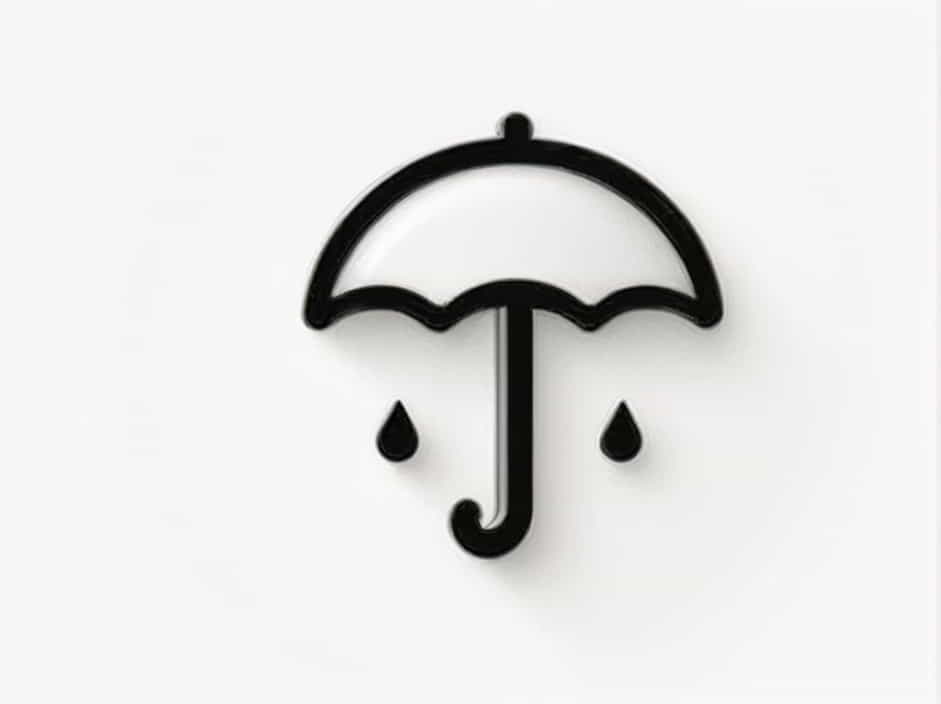Convectional rainfall is a common weather phenomenon that occurs in tropical and temperate regions, particularly in areas with high temperatures and abundant moisture. It is characterized by heavy rainfall, thunderstorms, and strong winds, often occurring in the afternoon or evening due to intense solar heating.
While convectional rainfall is essential for agriculture and water supply, it also presents several problems that affect infrastructure, human health, economic activities, and the environment. This topic explores the various challenges associated with convectional rainfall, including flooding, erosion, transportation disruptions, and health risks.
1. What is Convectional Rainfall?
A. Definition and Process
Convectional rainfall occurs when the sun heats the Earth’s surface, causing warm, moist air to rise. As the air ascends, it cools and condenses, forming cumulonimbus clouds that result in intense downpours and thunderstorms.
B. Where is Convectional Rainfall Common?
This type of rainfall is prevalent in:
- Tropical regions (e.g., Amazon Rainforest, Central Africa, and Southeast Asia).
- Equatorial zones (e.g., parts of Kenya, India, and Indonesia).
- Temperate areas during summer months (e.g., parts of the United States and Australia).
2. Flooding and Waterlogging
A. Causes of Flooding Due to Convectional Rainfall
- Sudden and intense rainfall overwhelms drainage systems.
- Low-lying areas experience rapid water accumulation.
- Deforestation and urbanization reduce the soil’s ability to absorb water.
B. Effects of Flooding
- Destruction of homes and infrastructure in urban and rural areas.
- Loss of agricultural land due to excess water in fields.
- Displacement of people, leading to humanitarian crises.
C. Waterlogging Issues
- Poorly drained soils remain saturated for long periods, affecting plant growth.
- Stagnant water creates breeding grounds for mosquitoes and waterborne diseases.
3. Erosion and Landslides
A. Soil Erosion
- Heavy rainfall washes away topsoil, leading to reduced soil fertility.
- Farmers struggle with lower agricultural yields due to nutrient loss.
B. Increased Landslides
- In hilly and mountainous regions, convectional rainfall loosens soil and rocks.
- This leads to landslides that damage roads, homes, and farmland.
C. Riverbank Erosion
- Rivers experience higher water volumes, leading to bank collapse.
- Infrastructure like bridges and roads is affected by constant erosion.
4. Transportation Disruptions
A. Road and Highway Damage
- Intense rainfall creates potholes and weakens road surfaces.
- Landslides block roads, making travel difficult and dangerous.
B. Air Travel Delays
- Thunderstorms and strong winds force flight cancellations and diversions.
- Airports in tropical regions struggle with water accumulation on runways.
C. Rail and Public Transport Issues
- Flooded train tracks cause major travel disruptions.
- Public transport systems, especially buses, become unreliable during heavy rainfall.
5. Health Risks and Diseases
A. Waterborne Diseases
- Flooding contaminates drinking water, leading to outbreaks of cholera, typhoid, and dysentery.
- Poor sanitation during rainy seasons increases the spread of gastrointestinal infections.
B. Respiratory Infections
- Damp conditions and high humidity contribute to the rise of bronchitis, pneumonia, and asthma.
- People living in crowded urban areas face greater exposure to mold and mildew, which worsen respiratory problems.
C. Vector-Borne Diseases
- Stagnant water from heavy rainfall leads to an increase in mosquito populations, causing malaria and dengue fever outbreaks.
- Rodents thrive in flood-prone areas, spreading leptospirosis and other infections.
6. Economic and Agricultural Challenges
A. Crop Damage and Food Security
- Heavy rainfall destroys crops like maize, rice, and vegetables.
- Waterlogging reduces soil fertility, leading to poor harvests and increased food prices.
B. Livestock Losses
- Animals drown or contract diseases in waterlogged grazing lands.
- Farmers face financial losses due to the death of cattle, sheep, and poultry.
C. Fishing Industry Disruptions
- Strong winds and rough waters make fishing dangerous.
- Floodwaters contaminate lakes and rivers, affecting fish populations.
D. Damage to Businesses and Local Markets
- Flooded streets force shops and markets to close.
- Businesses suffer from property damage and reduced customer traffic.
7. Impact on Energy and Communication Systems
A. Power Outages
- Strong winds and lightning strikes damage power lines, causing blackouts.
- Floods destroy electricity infrastructure, leading to long periods without power.
B. Communication Failures
- Telecommunication towers collapse, affecting mobile and internet services.
- Emergency response teams struggle with delayed communication during disasters.
8. Psychological and Social Effects
A. Stress and Mental Health Issues
- Constant exposure to floods and displacement increases anxiety and depression.
- Economic hardships due to crop failure and job loss contribute to emotional distress.
B. Disruptions to Education
- Schools close due to flooded classrooms and damaged facilities.
- Students in flood-prone areas miss lessons for extended periods, affecting their academic progress.
C. Increased Poverty Levels
- Loss of homes, farmland, and businesses worsens financial struggles.
- People in low-income communities face the greatest challenges in recovering from rainfall-related disasters.
9. Solutions and Mitigation Measures
A. Improving Drainage Systems
- Governments should invest in modern urban drainage systems.
- Communities should clear blocked waterways before heavy rains begin.
B. Reforestation and Soil Conservation
- Planting trees helps reduce soil erosion and landslides.
- Farmers should adopt terracing and crop rotation to maintain soil fertility.
C. Early Warning Systems
- Weather forecasting services must provide timely warnings about expected storms.
- Local authorities should educate communities on emergency preparedness.
D. Flood-Resistant Infrastructure
- Constructing elevated homes and reinforced roads can minimize damage.
- Engineers should design stronger bridges and drainage networks to withstand heavy rainfall.
E. Sustainable Urban Planning
- Cities should avoid building in flood-prone areas.
- Governments must enforce zoning laws to reduce urban flooding risks.
Convectional rainfall plays a crucial role in sustaining ecosystems and agriculture, but it also comes with severe challenges such as flooding, erosion, transportation problems, health risks, and economic losses. To minimize its negative effects, communities and governments must implement effective mitigation measures, including better drainage systems, flood-resistant infrastructure, and early warning systems.
By taking proactive steps, societies can reduce the impact of convectional rainfall and ensure a safer, more sustainable environment for future generations.
